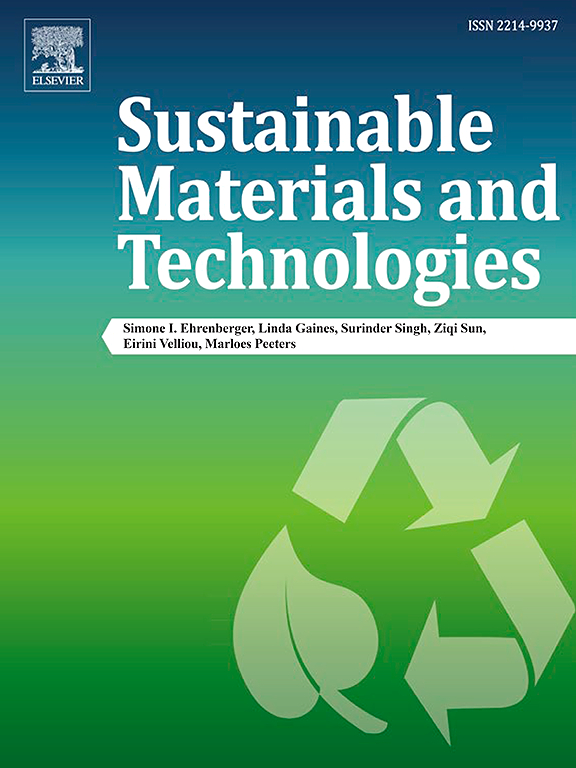可生物降解壳聚糖纤维素结构复合材料的电学、声学和隔热性能的表征
IF 8.6
2区 工程技术
Q1 ENERGY & FUELS
引用次数: 0
摘要
绝缘材料对工程效率至关重要,因为它们直接减少了能量损失或消除了对额外组件的需要来补偿它们。然而,大多数绝缘材料是不可生物降解的聚合物,在生产和处置过程中会严重导致环境退化。本研究探索了生物启发壳质纤维素材料的使用,这是一种生物复合材料,以其低成本、多功能制造和生态整合而闻名于结构应用中,作为可持续隔热材料。该研究比较了三种具有不同纤维素成分的壳质纤维素变体,并评估了它们的电、热、隔音能力,以及可燃性、可生物降解性、环境影响和机械性能。与传统的聚氨酯泡沫相比,其隔热性能更低,电绝缘性相似,隔音效果更好。此外,它们具有可3d打印,在环境条件下完全可生物降解和防火的优点,突出了它们作为合成绝缘体的可行绿色替代品的潜力。本文章由计算机程序翻译,如有差异,请以英文原文为准。
Characterization of the electrical, acoustic, and thermal insulating properties of biodegradable chito-cellulosic structural composites
Insulation materials are essential for engineering efficiency, as they directly reduce energy losses or eliminate the need for extra components to compensate for them. However, most insulation materials are non-biodegradable polymers that significantly contribute to environmental degradation during production and disposal. This study explores the use of bioinspired chito-cellulosic materials —a family of biological composites known in structural applications for their low cost, versatile manufacturing, and ecological integration— as sustainable insulation. The study compares three chito-cellulosic variants with different cellulose compositions and evaluates their electrical, thermal, and acoustic insulation capabilities, as well as flammability, biodegradability, environmental impact, and mechanical properties. The insulating results are compared to conventional polyurethane foams, demonstrating lower thermal insulation capabilities, similar electrical insulation, and better acoustic insulation. Moreover, they offer the advantages of being 3D-printable, fully biodegradable in environmental conditions, and fireproof, highlighting their potential as a viable green alternative to synthetic insulators.
求助全文
通过发布文献求助,成功后即可免费获取论文全文。
去求助
来源期刊

Sustainable Materials and Technologies
Energy-Renewable Energy, Sustainability and the Environment
CiteScore
13.40
自引率
4.20%
发文量
158
审稿时长
45 days
期刊介绍:
Sustainable Materials and Technologies (SM&T), an international, cross-disciplinary, fully open access journal published by Elsevier, focuses on original full-length research articles and reviews. It covers applied or fundamental science of nano-, micro-, meso-, and macro-scale aspects of materials and technologies for sustainable development. SM&T gives special attention to contributions that bridge the knowledge gap between materials and system designs.
 求助内容:
求助内容: 应助结果提醒方式:
应助结果提醒方式:


